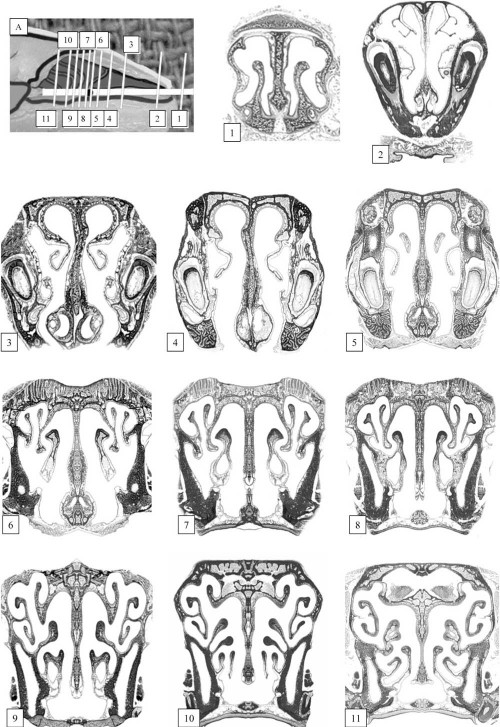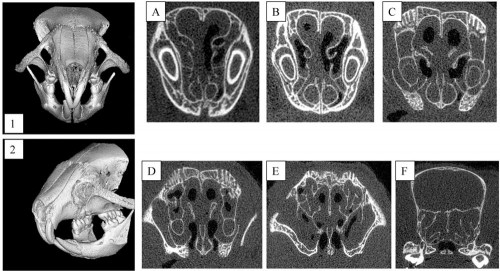I think BAHFest — the festival of Bad Ad Hoc Hypotheses — has been made entirely redundant. It’s an event to mock the absurdly adaptationist hypotheses put forward by some scientists, and it’s intended to be extravagantly ridiculous. But then, you look at some ideas that are inexplicably popular among scientists, and you realize…it’s a little too close to reality.
I’m speaking of the Aquatic Ape Hypothesis.
The Guardian is running yet another article on the goofy idea that we evolved from swimming apes, and that all of the unique features of our species are a product of adaptations to an aquatic lifestyle. It’s complete nonsense: there is no evidence of long-term residence of our species in the water, and the proponents tend to invent the most outrageous panglossian explanations, fitting data to the hypotheses instead of the other way around. At least this story has one new contrivance I’d never heard before. Take it away, Rhys Evans!
“Humans have particularly large sinuses, spaces in the skull between our cheeks, noses and foreheads,” he added. “But why do we have empty spaces in our heads? It makes no sense until we consider the evolutionary perspective. Then it becomes clear: our sinuses acted as buoyancy aids that helped keep our heads above water.”
<stunned silence>
But…but…but every mammal, as far as I know, has a head full of sinuses! Have you ever taken a mouse skull apart? They’re amazingly spongy. Here are some sections through a mouse skull to show you what I mean:

Coronal sections. There is a distinct osteomeatal complex within the nose that drains the true maxillary sinus as well as ethmoids. The true maxillary sinus is located lateral to the osteomeatal complex, and unlike the other sinuses, is lined by submucosal glands. This true maxillary sinus has a single ostium. Each nasal passage is separated by nasal septum. The posterior septum is deficient along its inferior aspect, and the two nasal passageways communicate freely just anterior to nasopharynx.
Isn’t that just beautiful? It’s fairly typical, too: mammals have these elaborate spaces to lighten the skull, humidify inspired air, and in some provide expanded surface area for olfaction — but I suspect the slight contribution of sinuses to those functions means that they’re actually a consequence of conserved developmental programs to build the skull. They’re there as a byproduct of developmental processes in which a scaffold is assembled first, and then thickens and fills in over time. The density of the skull is relatively easily regulated by modifying the timing of its development.
Just because they’re pretty, here’s another image of mouse skulls:

Plates 1 and 2 display three-dimensional computed tomography (CT) reconstructions of mouse skull in axial and lateral-oblique views. Plates A to F display coronal fine cut CT scan images, confirming our histologic planes of section.
So, did mice have an aquatic ancestor? Doesn’t this hypothesis imply that every mammal descended from an aquatic ancestor? (I shouldn’t ask that: my experience with AAH fanatics is that they joyfully answer “yes” to the question.)
I also wonder if these people ever go swimming. Somehow, my sinuses don’t seem to work very effectively as water wings.
Michael Crawford offers a familiar absurdity: the nutritional argument from docosahexaenoic acid (DHA). DHA is one of those omega-3 fatty acids that is used to build brains, and it’s found in high concentration in lots of seafood. The true zealots consider this indisputable proof that we evolved by eating lots of clams.
“It boosts brain growth in mammals. That is why a dolphin has a much bigger brain than a zebra, though they have roughly the same body sizes. The dolphin has a diet rich in DHA. The crucial point is that without a high DHA diet from seafood we could not have developed our big brains. We got smart from eating fish and living in water.
“More to the point, we now face a world in which sources of DHA – our fish stocks – are threatened. That has crucial consequences for our species. Without plentiful DHA, we face a future of increased mental illness and intellectual deterioration. We need to face up to that urgently. That is the real lesson of the aquatic ape theory.”
An experiment: let’s feed zebras bucketloads of DHA, and watch their brains expand to 3-5 pound blobs that give them advanced communications abilities!
Oh, wait. It won’t work. There’s such a thing as neuroplasticity, but brains aren’t quite that flexible. I’m willing to believe that increased availability of the building blocks of brains might remove a constraint on growth, but not that it’s causal, as Crawford claims. Even feeding many generations of zebras DHA isn’t going to affect brain size much at all…and there’s no evidence that terrestrial herbivores are in any way limited by the availability of DHA.
For one thing, they synthesize it. We humans synthesize it, too. We also get it from the herbivores we eat, and certain plants are rich in the precursors to DHA. Vegans have to pay attention to get their DHA requirements met, but it’s not particularly difficult, and you don’t see lifelong vegetarians walking around with itty-bitty pinheads.
There are good reasons to be deeply concerned about declining fish stocks, but preserving a resource vital to the formation of our brains isn’t one of them. There are many people around the world who don’t eat seafood — there are entire ethnic groups who haven’t touched the stuff for generations. There are big-brained primate species that virtually never eat fish. How do they survive? How do they avoid “mental illness and intellectual deterioration”? They get it from other dietary sources.
Mammals in general are larger brained than other animals, are we to use that as an argument that all mammals went through an aquatic stage in their evolution…oh, wait. I did it again. The True Believers will just say “YES!” to that.


